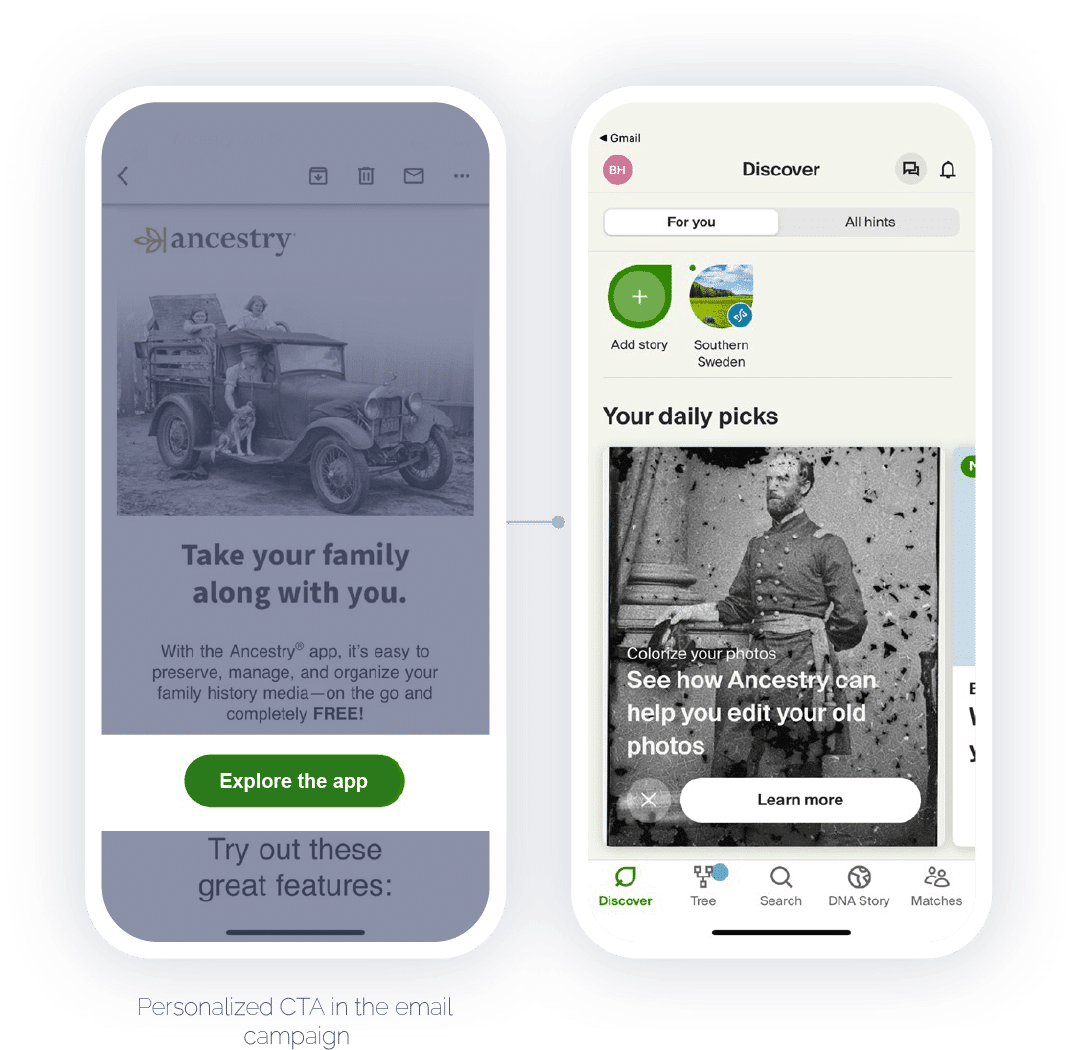Digital transformation isn’t just about adopting the latest technologies; it’s about integrating experiences across all touchpoints to drive meaningful customer engagement. Modern consumers interact with brands through various channels — mobile apps, websites, social media, and brick-and-mortar stores. And with marketers now leveraging an average of 10 channels, the demand for cohesive and connected experiences has never been greater.
To truly succeed in digital transformation, brands have to shift their internal focus from individual channels to a holistic view of the customer journey across owned, earned, and paid channels. This reorientation enables teams to be more agile and responsive and allows them to adapt their engagement strategies in real time. Understanding the complete customer experience — not just isolated interactions — helps marketers to identify friction points, deliver targeted messaging when it matters most, and optimize resource allocation. The goal is to ensure that every touchpoint contributes to a seamless and unified journey, ultimately driving higher conversion rates and fostering customer loyalty.
Why cross-channel experiences matter to customers
Think about the retail sector. Imagine a shopper who signs up for a loyalty program after clicking on a social media ad. They then receive a custom discount via email, which they redeem during their next in-store visit. This flow not only encourages purchases but also enhances their loyalty to the brand. By linking digital channels to in-person conversions, retailers can create a more consistent, personalized experience that keeps customers coming back.
The same principle applies to sectors like travel and finance. Consider a traveler who books a flight online, receives itinerary updates via app notifications, and checks in using an email link. Each touchpoint streamlines their journey, ensuring they feel in control and informed. In finance, banking customers might start by opening an account on a website, then move seamlessly to a mobile app to manage transactions — all while receiving tailored communications that guide them along the way.
These integrated experiences matter because they eliminate friction. When customers see consistent messaging across channels, it builds trust and reinforces loyalty. They know they’re interacting with a brand that understands their preferences and delivers value at every turn.
Why cross-channel insights matter to brands
For brands, the challenge goes beyond simply creating seamless experiences; it’s about breaking down silos and fostering a customer-first mindset. With cross-channel insights, teams can transform their internal processes to be more aligned with customer journeys rather than individual touchpoints.
Understanding interactions across channels is also invaluable for optimizing engagement strategies. For example, how does an email open translate into an in-store purchase? How do app interactions influence repeat visits? Gaining clarity on these connections allows brands to refine their approaches and achieve better conversion rates.
While most brands agree on the vision for digital transformation, several roadblocks stand in the way. Data silos often obscure a complete view of customer interactions, and managing engagement across multiple channels adds complexity. Plus, evolving privacy regulations complicate customer data tracking and cross-channel attribution. This makes a centralized view of first-party data crucial for understanding how each channel impacts conversions, engagement, retention, and key metrics like customer lifetime value (LTV).
How to actually connect experiences and insights across channels
Unifying interactions and data across channels is possible with the right tools. Here’s how.
1. Create cohesive experiences with deep links.
To engage users effectively and drive them to higher-value channels, like your mobile app, you need to eliminate barriers in their journey. Deep links enable this by providing a frictionless transition between channels — whether from email, web, or even social media platforms.
For example, plugging Branch Engagement into your email service provider (ESP) automatically converts email marketing links into multi-platform deep links, taking users directly to content in the app while still maintaining the same web experience for desktop or mobile users without the app. Ancestry® increased its app opens by 44% and downloads by 50% using this exact strategy.
Users without the app
Users with the app
Similarly, smart banners on your mobile website can guide users from the web to your app, maintaining their journey context even through the app installation process. This extends to offline interactions too: QR (quick response) codes placed in physical stores or on printed media can help bridge the gap between digital and offline channels. For instance, a customer can scan a QR code in-store that directs them to an app-only offer, or scan an in-app code to redeem a discount during checkout. KFC took this approach by displaying QR codes throughout its pop-up pub campaign in London. Branch QR codes — placed on pint glasses, menus, and even bathroom mirrors — encouraged customers to download the app to order KFC chicken to their tables.
By connecting these touchpoints and eliminating user experience friction points like broken links, logged-out experiences, and manual navigation, you can usher users to key actions and boost conversions.
2. Use cross-channel analytics to uncover customer journey and campaign performance insights.
Cross-channel analytics offer a comprehensive way to track and evaluate user behavior across multiple platforms and devices, from mobile apps and websites to TV ads. By centralizing insights from owned, earned, and paid channels, marketers can better understand how different touchpoints contribute to the customer journey. This consolidated view helps identify which channels and platforms — like iOS, Android, web, or connected TV (CTV) — are driving engagement, conversions, and overall performance.
The key to this is using sophisticated attribution tools to unify data from all your marketing channels in one place. This allows marketers to analyze each step of the customer journey holistically, even if the user starts on one platform, like viewing a CTV ad, and finishes on a different channel, like completing a purchase on a mobile app. By mapping these interactions, you can identify patterns in customer behavior that you might miss when analyzing channels in isolation.
Max Fashion, for example, launched an omni-channel campaign where shoppers could scan a QR code to participate, download the app, and then redeem their special offer immediately in-store, during their next visit, or online. By using mobile-optimized QR codes, the marketing team can track how offline and e-commerce channels work together to drive purchases.
Once you have these insights, the applications are endless. By creating rules to identify user groups — such as users who installed an app but haven’t returned — you can create targeted reengagement campaigns. This might look like triggering simple push notifications or syncing data with ad networks for more personalized outreach across paid channels. Aha, an over-the-top (OTT) streaming service, adopted this approach by introducing tracking links across all owned channels, reducing spend on WhatsApp and SMS by 10% while increasing subscriptions by 17% through targeted cohort optimizations.
These valuable insights help you make informed decisions to improve cross-channel marketing campaign performance, ensuring that all channels are working together effectively to drive business outcomes.
How Branch helps
Branch’s Growth Platform empowers brands to navigate the complexities of digital transformation by centralizing data and creating seamless customer experiences across channels. With robust attribution and performance insights, you can measure the entire user journey, from initial brand exposure to conversion, and make informed, data-driven decisions about your marketing efforts. And with advanced tools like deep linking and cross-channel analytics, you can optimize every touchpoint to contribute to your overall marketing success.
Ready to accelerate your digital transformation? Get in touch with our team.









